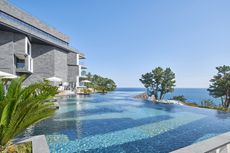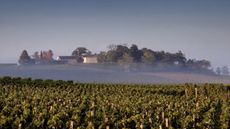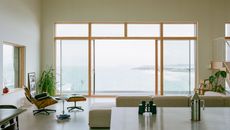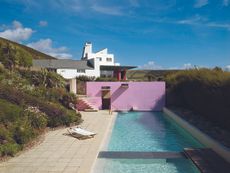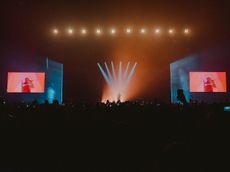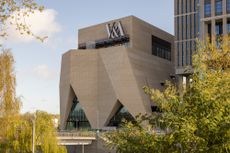Adam Nathaniel Furman’s ‘Abundance’ brings colours of the British garden to Paddington
Adam Nathaniel Furman’s ‘Abundance’ installation London’s Paddington is conceived as an abstracted, ‘frozen garden’ that mesmerises
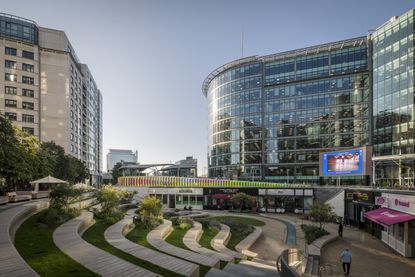
Receive our daily digest of inspiration, escapism and design stories from around the world direct to your inbox
Thank you for signing up to Wallpaper. You will receive a verification email shortly.
There was a problem. Please refresh the page and try again.
'Abundance is 'a frozen garden' in which the colours of a British garden in high spring are abstracted and turned into a crafted human-made artistic intervention that can be enjoyed all year long, in all weather conditions,' explains award-winning artist and designer Adam Nathaniel Furman. They are referring to their latest installation, a brightly, very carefully planned installation which has just been unveiled in London's Paddington.
On display in the revamped Amphitheatre area in Paddington Central’s Sheldon Square, the piece of public art certainly draws the eye and brings on a smile. No wonder it's already been gaining fans: 'Just spending time next to the work and seeing how the public interact with it, it is empirically clear that people are drawn to it, immensely enjoying it. It has already become a focus of local affection.'

Adam Nathaniel Furman's 'Abundance': a burst of colour in urban public space
Furman was born in St Mary’s Hospital adjacent to the Paddington station campus, so the whole area is very close to their heart. The aim was to create a piece that brings colour and vibrancy to the neighbourhood's public spaces, ensuring there are plenty of accessible, purpose-built areas for the public to rest, gather, and relax – addressed to both locals and the capital's many tourists alike.

Adam Nathaniel Furman's Abundance installation in Paddington
Abundance certainly does that, offering a welcoming burst of colour that unfolds in a strategic way across the square. Furman employed their extensive experience in using light, colour and texture to craft a design that is truly site-specific.
'Up close, the design is intended to create an immersive colour environment that is constantly transforming itself as you move along it, both because of the various colours arranged in such a way that they change in visibility as you pass, but also because of the level of gloss in the finish that incorporates the reflected context and daylight conditions, adding extra layers of richness to the experience,' Furman explains.

Adam Nathaniel Furman's 'Abundance' installation in Paddington
'From further away the work embeds an unapologetically layered and rich aesthetic element into a very corporate environment that was previously dominated by the grey-brown colour of stone and cementitious panels and the green-blue colour of large-pane-glass curtain-wall cladding,' Furman continues.
'A big part, other than the artwork, of the transformation of Sheldon Square was the introduction of more varied plants. It is not rocket science and it was pretty widely understood by urban planners up until recently (and it is once again being slowly rediscovered) that the inclusion of planting, natural elements, as well as crafted, artistic features in our urban realm is vitally important to making our cities feel more welcoming and enjoyable.'

A key element in this public place's 21st-century transformation, the art piece is engaging and open to all to enjoy – just a stone's throw from Paddington Station and the adjacent canal route.


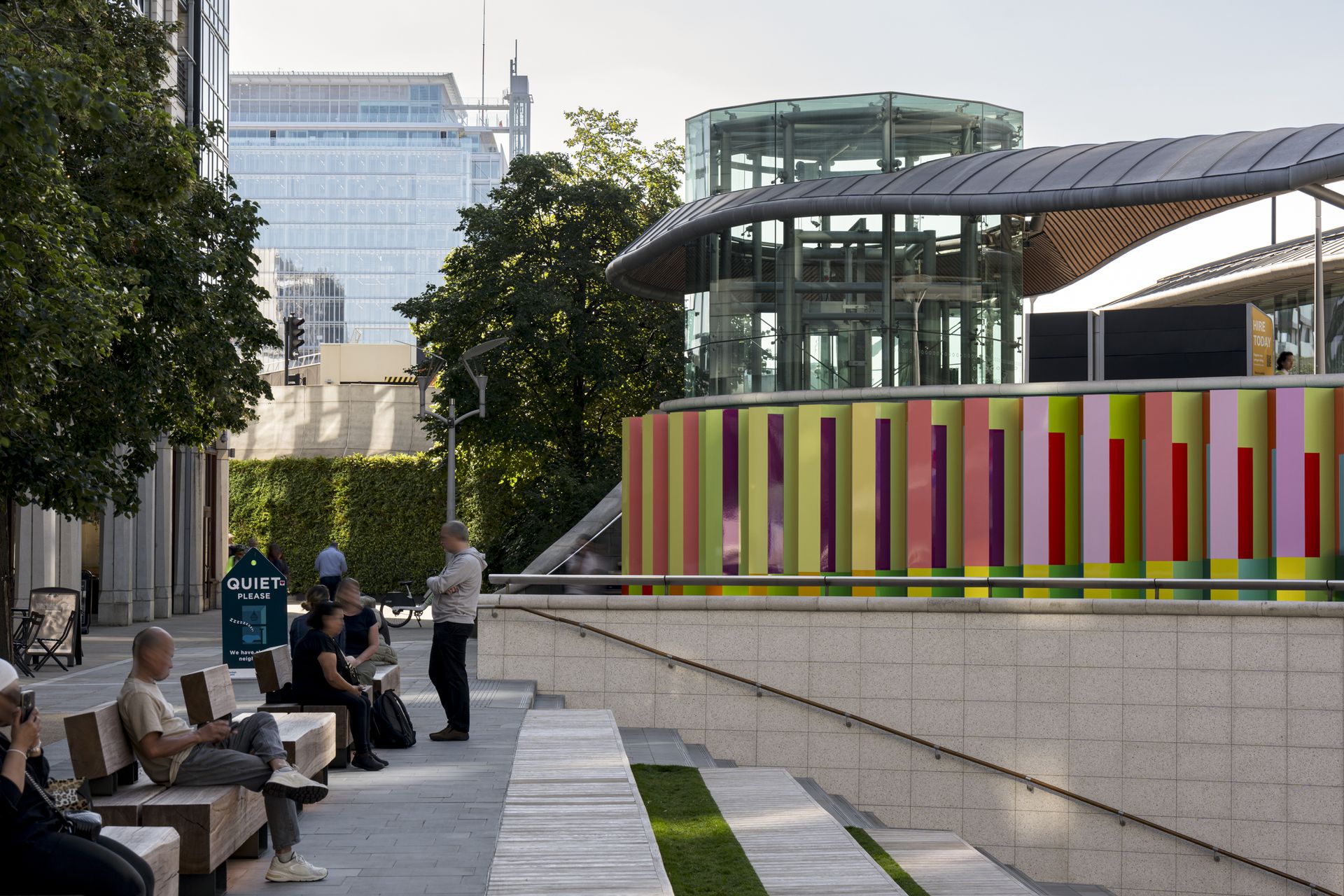
Wallpaper* Newsletter
Receive our daily digest of inspiration, escapism and design stories from around the world direct to your inbox
Ellie Stathaki is the Architecture Editor at Wallpaper*. She trained as an architect at the Aristotle University of Thessaloniki in Greece and studied architectural history at the Bartlett in London. Now an established journalist, she has been a member of the Wallpaper* team since 2006, visiting buildings across the globe and interviewing leading architects such as Tadao Ando and Rem Koolhaas. Ellie has also taken part in judging panels, moderated events, curated shows and contributed in books, such as The Contemporary House (Thames & Hudson, 2018) and Glenn Sestig Architecture Diary (2020).
-
 JW Marriott Jeju is a sleek island beauty
JW Marriott Jeju is a sleek island beautyJW Marriott Jeju launches, marking the hospitality brand's first resort in South Korea’s largest Island
By Daven Wu Published
-
 Common Works Architects, USA: Wallpaper* Architects’ Directory 2023
Common Works Architects, USA: Wallpaper* Architects’ Directory 2023Common Works’ White House makes the most of a skinny Oklahoma City plot
By Ellie Stathaki Published
-
 A Clarence Dillon estates tour offers an unparalleled way to experience Bordeaux
A Clarence Dillon estates tour offers an unparalleled way to experience BordeauxClarence Dillon produces some of the world's finest wine. We take a trip to their vineyards to see how
By Mary Cleary Published
-
 Of Architecture, UK: Wallpaper* Architects’ Directory 2023
Of Architecture, UK: Wallpaper* Architects’ Directory 2023UK-based practice Of Architecture joins the Wallpaper* Architects’ Directory 2023, our annual round-up of exciting emerging studios
By Ellie Stathaki Published
-
 The iconic British house: key examples explored
The iconic British house: key examples exploredNew book ‘The Iconic British House’ by Dominic Bradbury explores the country’s best residential examples since 1900
By Ellie Stathaki Published
-
 Loyle Carner’s Reading Festival 2023 stage presents spatial storytelling at its finest
Loyle Carner’s Reading Festival 2023 stage presents spatial storytelling at its finestWe talk to Loyle Carner and The Unlimited Dreams Company (UDC) about the musical artist’s stage set design for Reading Festival 2023
By Teshome Douglas-Campbell Published
-
 Step inside Horizon 22: a viewing gallery offering spectacular London vistas
Step inside Horizon 22: a viewing gallery offering spectacular London vistasHorizon 22 viewing gallery opens at 22 Bishopsgate, offering London vistas like no other
By Ellie Stathaki Published
-
 Behind the V&A East Museum’s pleated façade
Behind the V&A East Museum’s pleated façadeBehind the new V&A East Museum’s intricate façade is a space for the imagination to unfold
By Ellie Stathaki Published
-
 The People’s Pavilion 2023 is ‘about the power of the collective’
The People’s Pavilion 2023 is ‘about the power of the collective’The People’s Pavilion 2023 launches at Lea Bridge Library, Waltham Forest in east London – and it’s designed and built by teenagers
By Shawn Adams Published
-
 The finest brutalist architecture in London and beyond
The finest brutalist architecture in London and beyondFor some of the world's finest brutalist architecture in London and beyond, scroll below. Can’t get enough of brutalism? Neither can we.
By Jonathan Bell Published
-
 A refreshed Tate Modern cafe offers architectural space for cake, rest and party
A refreshed Tate Modern cafe offers architectural space for cake, rest and partyThe reimagined Tate Modern cafe is here to bring multifunctional 21st century architectural space on the ground level of the much loved London gallery
By Ellie Stathaki Published
